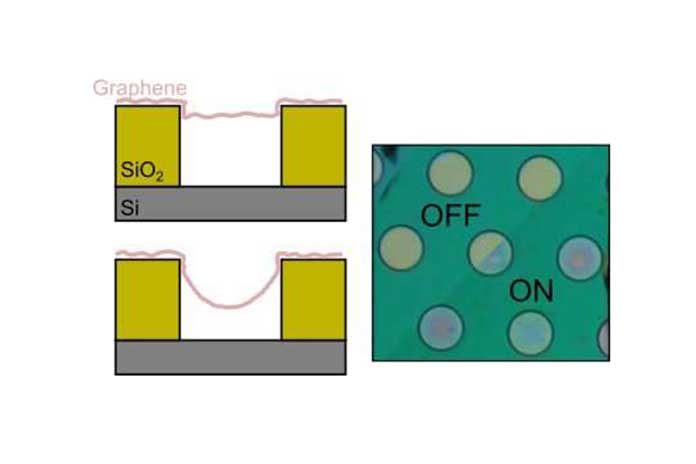Reflective-type displays (like those in e-book readers) consume little power, though they cannot deliver video. Reflective displays that offer the specifications of standard technologies (OLED, LCD) are not available yet. Now, graphene makes it possible.
Scientists at the TU Delft in collaboration with researchers from SCALE Nanotech, Graphenea have developed reflective-type displays using graphene flickers. These newly developed reflective displays are expected to operate proficiently at much higher resolution.
Graphene is a perfect blend for microscale electromechanical systems (MEMS). Membranes in a graphene MEMS can be moved by applying an electric potential and, together with the huge optical assimilation of graphene (2.3 percent of visible light), the specialists utilized them to make a Graphene Interferometric MOdulator Display or essentially GIMOD.
Dr. Houri said, “Pixels in a GIMOD are electrically controlled membranes that modulate the white light from the environment. Measurements at TU Delft were sufficient to discover partially the potential of GIMOD pixels. We managed to characterize them up to 400 Hz, but we know they can reproduce the same color state at up to 2000 Hz. Humans cannot perceive flicker images beyond 500-1000Hz, but these displays beat the best commercial screens operating at 144Hz.”
Dr. Cartamil-Bueno, the inventor and researcher that fabricated the graphene displays said, “We showcased GIMOD prototypes of 2500 pixels per inch (ppi) in the Mobile World Congress, and many players from the display industry reacted quite enthusiastically. While participating in several business contests in Germany, I have been preparing the team and securing capital. In a few weeks, we will launch the startup to commercialize GIMOD components, aiming to tackle the VR market because that is where GIMOD outperforms every other technology.”
“The graphene pixels that the researchers presented are 5µm in size, in contrast to those in the Apple iPhone X (55µm), Samsung Galaxy S9 (44µm), and Sony Xperia XZ Premium (31µm). Our GIMOD prototypes would have a resolution of more than 12K if we make them the size of a smartphone display.”
The study is published in the journal Nature Communications.
